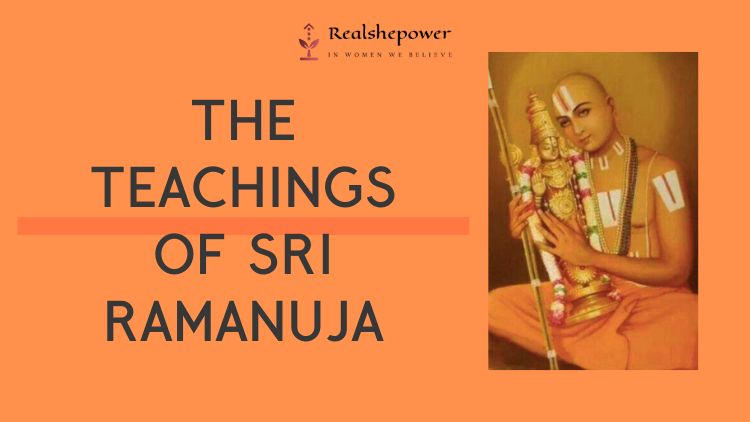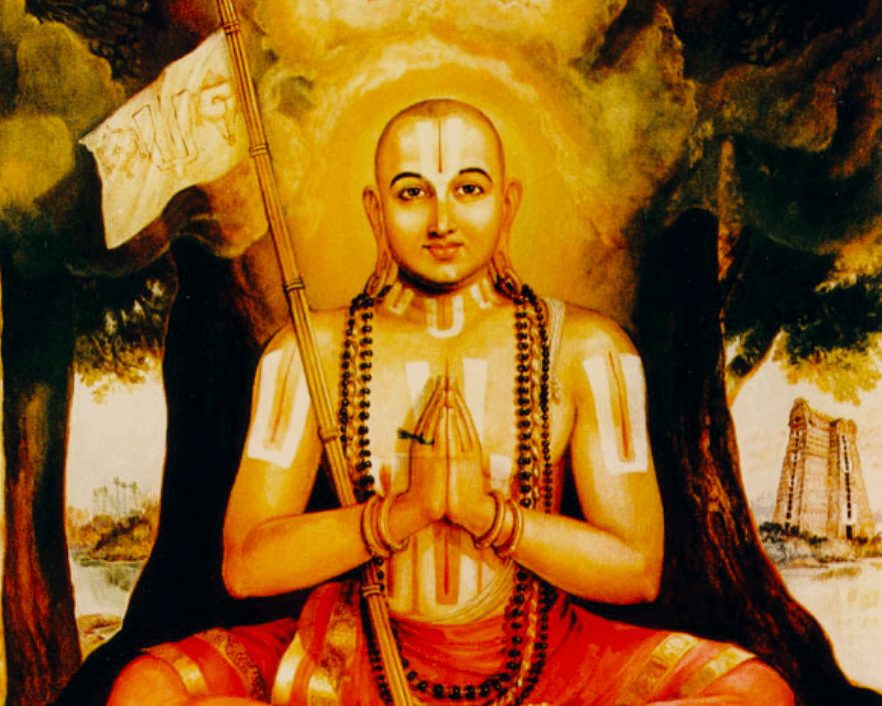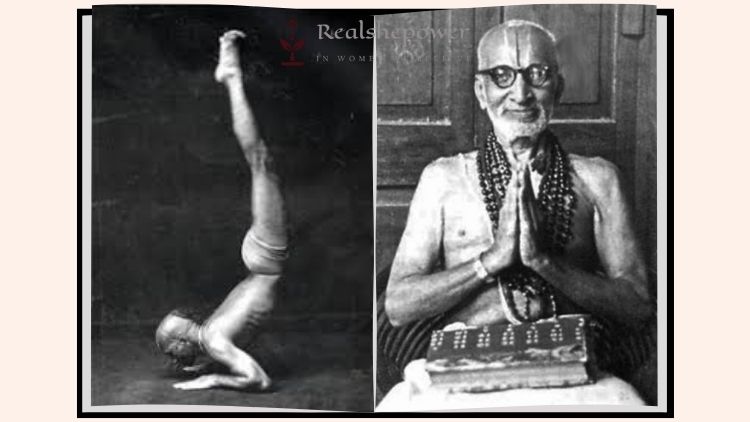Sri Ramanuja: A Guiding Light On Spiritual Harmony


On the banks of the river Cauvery, Thiruppaan Azhwarwas born into the Paanarcommunity, one of the musicians who were traditionally considered outcasts. Thiruppaan Azhwar grew up as a devotee of Sri Ranganatha, his singing and his veena had the power to transcend anyone into intense devotional states. He was often found lost in the mystical world and pure love for his diety Ranganatha.
During one such time, Lokasaranga Muni, the priest of Srirangam temple, was carrying water for Sri Ranganatha and found Thiruppaan Azhwar, an untouchable, blocking his way. Miffed at the sight the priest threw a stone, which hit Thiruppaan Azhwar on the head, drawing blood. The Azhwar quietly moved away, saying nothing. However, on reaching Srirangam, the temple of Lord Ranganathan, the priest found the doors of the temple locked, denying him entry.
The Sri Vaishnava (a denomination within the Vaishnavism tradition of Hinduism) lore says Ranganatha commanded him to fetch Thiruppaan Azhwar on his shoulders into the sanctum sanctorum to atone for his grievous act. Thiruppaan Azhwar is said to have merged with the Lord the moment he saw his beloved deity Sri Ranganathan. Since then, Thiruppaan Azhwar is revered as one of the 12 Azhwar saints of the Sri Vaishnava tradition and his hymns are sung in temples across South India.
The Sri Vaishnava tradition is full of such stories and systems that have been institutionalised to ensure that every single person, without any barriers of jati (caste) or gender, must be given access to the divine. Sri Ramanuja in his own life exemplified this tradition and carried it forward in many ways. One such well-known episode in his life, was when, after being turned back 18 times, his guru initiated him into the Narayana Mantra.
Sri Ramanuja was explicitly warned that this was the secret of secrets and was sure to lead to mukti (liberation) and not to be shared. However, in his infinite compassion, he gathered the people of the town, climbed up the temple tower, and promised initiation into the mantra for all without any distinction. This universal spirit became an integral part of the Sri Vaishnava tradition.
With this act, Sri Ramanuja fundamentally changed the criterion for initiation: anyone who genuinely seeks must be initiated. Even today, any person regardless of jati, gender, or even nationality can receive initiation into the liberating mantras of the Sri Vaishnava tradition.
Norms set by Sri Ramanuja are to date followed by the temple administration of most of the Vishnu temples in South India. He institutionalised certain procedures that serve as powerful symbols. Those who have visited a Vishnu temple in the south would be familiar with the process of getting tirtha (sacred water) followed by shatari, a crown with a pair of sandals on top, being placed on the head of the devotee.
The shatari represents Nammazhwar, who was born an outcast. He is one of the 12 Azhwars too, and the entire tradition traces its parampara (lineage) back to Nammazhwar. In fact, Sri Ramanuja considered himself to be the sandals of Nammazhwar’s feet.

In his early life, Sri Ramanuja came in contact with Kanchipurna, a great devotee who was born into a low caste. Ramanuja revered him as his guru. Legend has it that Kanchipurna could converse with Narayana (the supreme being, the creator: the god) himself.
In fact, Sri Ramanuja is considered to have received answers to six questions foundational to his philosophy of Vishishtadvaita from the divine through Kanchipurna. Desiring to serve Kanchipurna, Ramanuja invites him to visit his house for a meal. Unfortunately, Kanchipurna arrived when Ramanuja was not at home.
His wife, who considered him to be of a low caste, served him food outside and washed the space where he sat. When Ramanuja returned, he was outraged at the way in which a devotee of the lord was treated and ran to Kanchipurna begging for forgiveness. Tradition also narrates this as one of the main causes for Ramanuja to leave his married life and adopt sannyasa (a form of asceticism).
Towards the end of his life, Sri Ramanuja used to lean on the shoulders of his disciples when he went to take a bath. Before the bath, he would lean on the shoulders of his Brahmana disciples. After the bath, he would lean on the shoulders of Villidasan, a Shudra by birth. When his Brahmin disciples objected, Ramanuja clearly emphasised the spiritually elevated state of Villidasan before which they paled in comparison.
Thus, through the emancipatory teachings of his tradition as well as through the temple administration mechanisms that he set up, as also by setting an example through his personal life, Sri Ramanuja opened the doors to outcasts and sought to open the minds of society.
Via Swarajya
Read: Life Of Krishnamacharya: A Powerful And Influential Figure In The World Of Yoga

You can now write for RSP Magazine and be a part of the community. Share your stories and opinions with us here.
